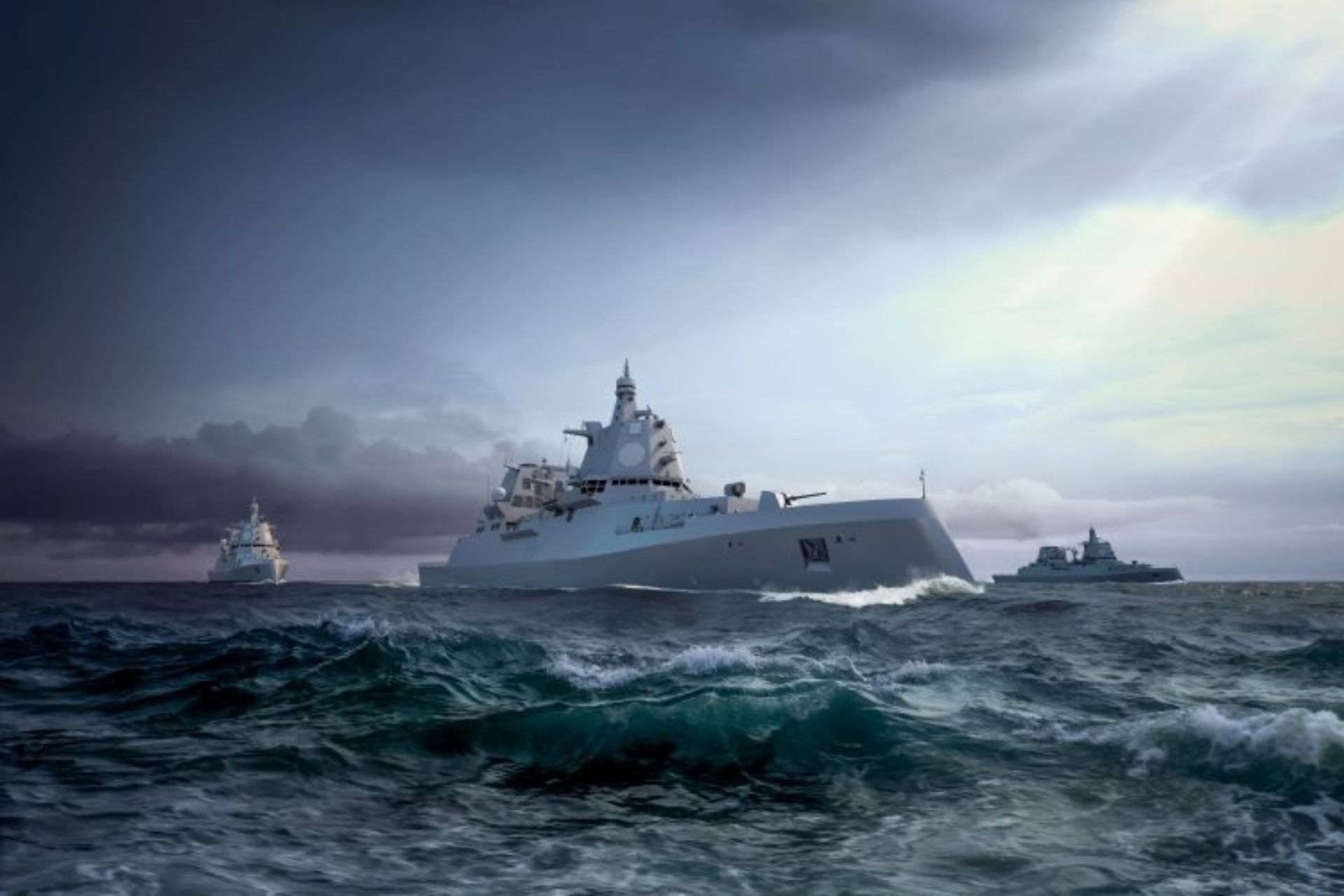Breaking News
Cooperation Between tkMS and NVL for Next Generation of F127 Frigates for German Navy.
With the introduction of the F127 frigates in the annual armaments report, the German Navy is drawing attention to what could become the largest armament project in its history, as reported by the magazine Europäische Sicherheit & Technikon September 2, 2024. The collaboration between Thyssenkrupp Marine Systems (tkMS) and the NVL group marks a significant step toward the realization of this ambitious project, as the two German naval shipbuilding giants prepare to unite in the development and construction of the next generation of air defense frigates for the German Navy.
Follow Army Recognition on Google News at this link

The MEKO A-400 AMD by Thyssenkrupp Marine Systems (Picture source: Thyssenkrupp Marine Systems)
During the SMM trade fair in Hamburg, considered the flagship event of the global maritime industry, tkMS and NVL signed a cooperation agreement to establish a joint venture aimed at building the MEKO-A400 frigate, a concept that could serve as the basis for the new F127 class frigates. This partnership seeks not only to combine the expertise and production capacities of both companies but also to ensure a rapid and reliable production process for these ships.
The F127 frigates, intended to replace the Sachsen-class in the 2030s, will represent a technological leap in air defense and ballistic missile defense (BMD). The preliminary design of the MEKO-A400 AMD by tkMS already appears to closely align with the requirements of the German Navy. With a displacement of approximately 10,000 tons and a length of 160 meters, these ships will be equipped with an AN/SPY-6(v)1 multifunction radar, subject to financial conditions imposed by the United States. If necessary, Lockheed Martin's AN/SPY-7 could be selected. Other planned equipment includes a full Towed Array Sonar (TAS) suite and up to six SeaSpyder systems. The frigates will also feature a helicopter hangar and a flexible hangar.
The offensive capabilities of the F127 will include 64 MK41 vertical launch system (VLS) cells, initially designed to accommodate missiles such as the ESSM Block 2, SM-2IIIC, SM-6, and potentially Tactical Land Attack Missiles (TLAM). Although the integration of SM-3 missiles is currently limited to a "fitted for but not with" (FFBNW) solution, these ships are expected to be capable of evolving to accommodate new weapons in the future, such as the "Tyrfing" anti-ship missile. The frigates will also be equipped with two Mk49 launchers for the RAM Block 2 missile, one of which could later be replaced by a high-energy laser (HEL). Additionally, the Navy is considering equipping these ships with 30mm light naval guns with airburst ammunition, as well as the Mk45 gun from BAE Systems, which is already integrated into the AEGIS system.
However, the financing of this project remains a critical issue. Although the German Navy has expressed the need for six F127 frigates, the latest armaments report mentions only five. Financial uncertainty persists, even though an advance budget of several hundred million euros is being considered for the coming year to maintain the production schedule and ensure future funding for the project.

The MEKO-A400 AMD Dome Defence (Picture source: Thyssenkrupp Marine Systems)
In parallel, international cooperation is being actively pursued to support this ambitious project. German Defense Minister Boris Pistorius recently discussed the possibility of collaboration with Norway during a visit to Oslo. Norway could be a key partner, especially as its naval infrastructure has recently been modernized, which could facilitate the integration of advanced systems like a full TAS suite. Another potential collaboration could arise with Denmark, which is considering an early replacement of its Iver Huitfeldt-class frigates.
While these international cooperations could complicate the acquisition process due to the necessary compromises in design and construction, they also offer undeniable advantages in terms of economies of scale, maintenance, and increased interoperability among allied navies. Such cooperation could also pave the way for greater military collaboration among Northern European countries, potentially including Canada, particularly concerning the integration of American defense systems.
The choice of the Combat Management System (CMS) remains a major strategic decision, with the CMS330 and Saab's 9LV among the options being considered. The CMS chosen for the F127 could become the standard for future classes of German Navy ships, underscoring the importance of this decision.
In conclusion, the F127 project represents a significant challenge for the German Navy, both financially and technically. However, it also presents a major industrial and military opportunity. To avoid an expensive extension of the Sachsen-class frigates' service life, it is imperative that the F127 project is implemented quickly and efficiently.


























